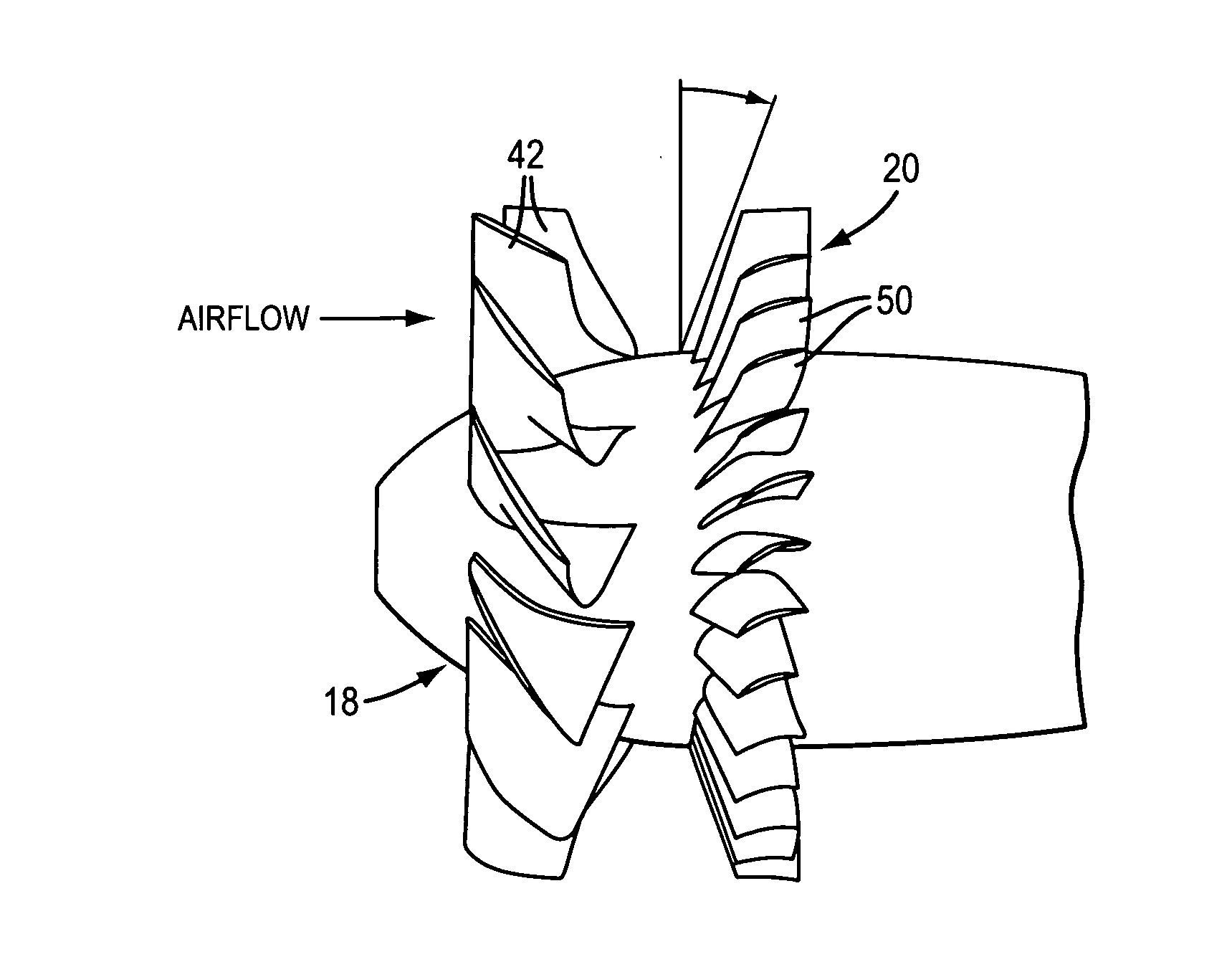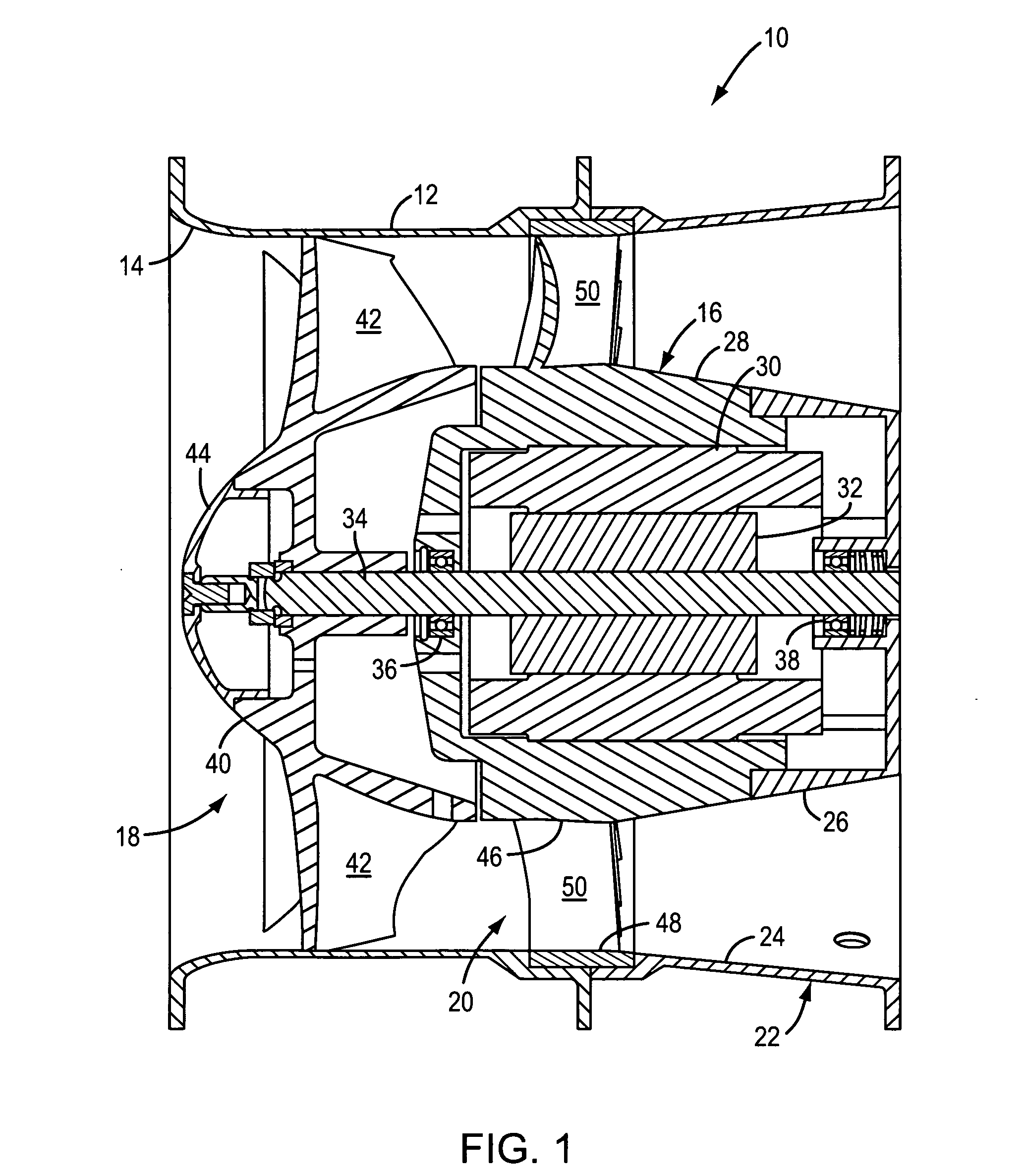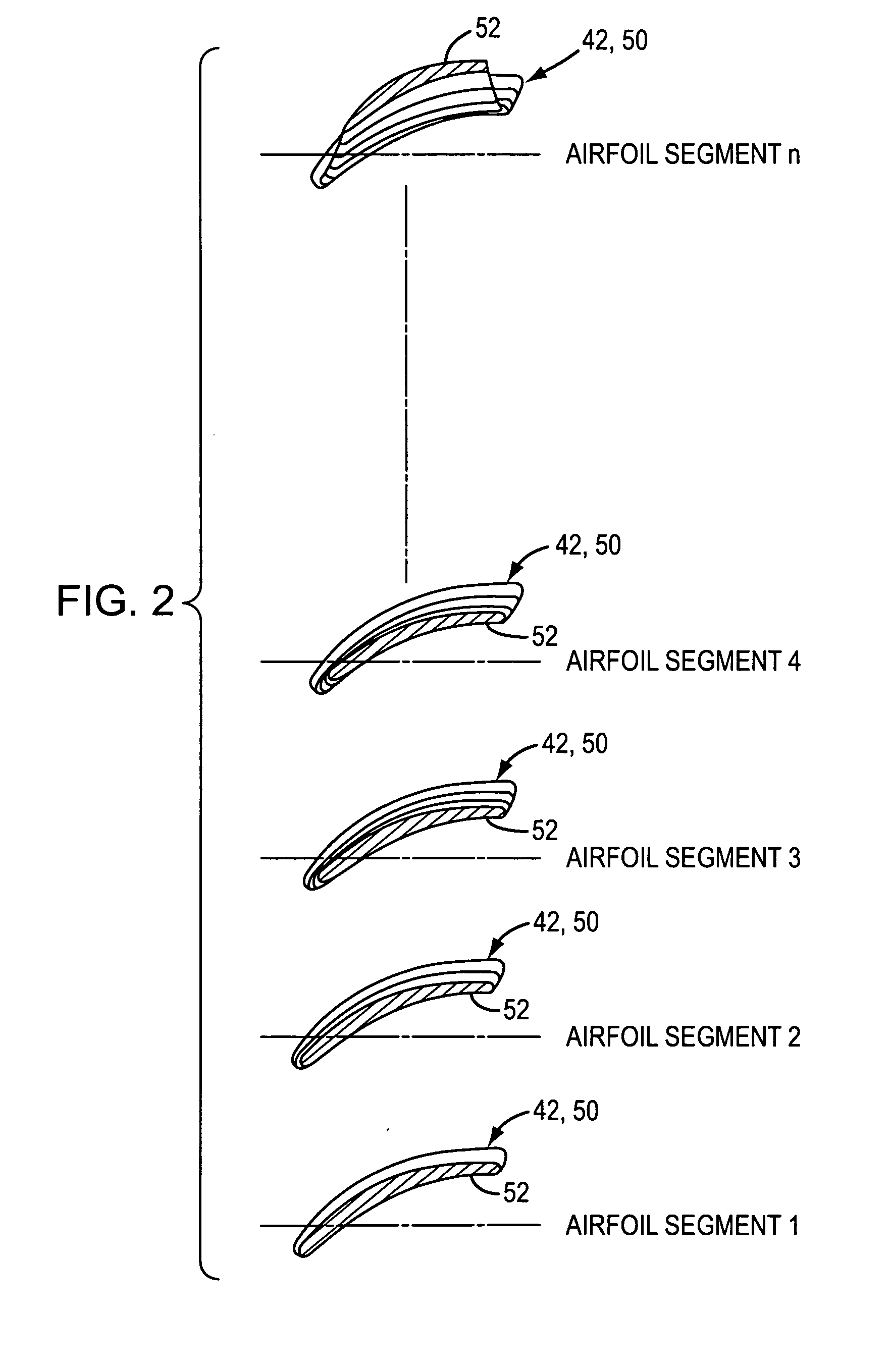High efficiency cooling fan
a high-efficiency, fan technology, applied in the direction of liquid fuel engines, marine propulsion, vessel construction, etc., can solve the problems of reducing life span, increasing power to operate, generating more noise, etc., to achieve maximum performance and range, minimize flow weakness, and maximize efficiency
- Summary
- Abstract
- Description
- Claims
- Application Information
AI Technical Summary
Benefits of technology
Problems solved by technology
Method used
Image
Examples
Embodiment Construction
[0028]The present invention is applicable to a variety of air movers. However, for purposes of brevity it will be described in the context of an exemplary vane-axial cooling fan. Nevertheless, the person of ordinary skill in the art will readily appreciate how the teachings of the present invention can be applied to other types of air movers. Therefore, the following description should not be construed to limit the scope of the present invention in any manner.
[0029]Referring to FIG. 1, an exemplary vane axial cooling fan 10 is shown to comprise a fan housing 12 which includes a converging inlet 14, a motor 16 which is supported in the fan housing, an impeller 18 which is driven by the motor, and an outlet guide vane assembly 20 which extends radially between the motor and the fan housing. The cooling fan 10 may also include a diffuser section 22 which is located downstream of the outlet guide vane assembly and which includes a diffuser tube 24 that is connected to or formed integral...
PUM
 Login to View More
Login to View More Abstract
Description
Claims
Application Information
 Login to View More
Login to View More - R&D
- Intellectual Property
- Life Sciences
- Materials
- Tech Scout
- Unparalleled Data Quality
- Higher Quality Content
- 60% Fewer Hallucinations
Browse by: Latest US Patents, China's latest patents, Technical Efficacy Thesaurus, Application Domain, Technology Topic, Popular Technical Reports.
© 2025 PatSnap. All rights reserved.Legal|Privacy policy|Modern Slavery Act Transparency Statement|Sitemap|About US| Contact US: help@patsnap.com



